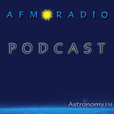
Summary: Show notes for the 22nd of April 2013 Title: The Spectacular York Universe 150th episode extravaganza Time: Starting 8 pm EDT (12 AM UT) - Ending 10 pm EDT (2 am UT) Hosts: Paul, Ryan, Jesse, Lianne, Ted, Harrison, Sophia, Rob, John, and George This episode was broadcast live via webcam to our Online Public Viewing (OPV) chatroom! York Universe (originally named ‘Live from YorkU’) has been on the air for 3 years and counting. A multitude of hosts have been through our camp, and all of them have helped shape York Universe into the wonderful product that you hear today. Today we celebrate our 150th episode. A large milestone, and one we thought worth marking with a special show! We’ve invited back past hosts, organized a fun trivia challenge (for hosts AND listeners), and designed some debate discussion. To accommodate all the additional content we also broadcast a full 2 hour program (instead of our usual 1 hour). Thank you to all our hosts and volunteers, thank you to astronomy.fm, and thank you very much to all our listeners without whom our show wouldn’t exist! See below for the show notes and the podcast. This week in Astronomy/Space History 1. April 23, 1962: The United States launched Ranger 4 (http://www.jpl.nasa.gov/missions/details.php?id=5957), a Lunar Hard Lander. Ranger 4 was a spacecraft that was intended to take images of the surface of the Moon during a 10 minute flight and transmit them to Earth, after which it would crash into the Moon and leave a "seismometer capsule" behind. Ranger 4 was also to collect gamma-ray data during flight as well as study the radar reflectivity or the surface of the Moon. However, the spacecraft failed to deploy its solar panels and navigation systems due to a computer failure, and it crashed into the far side of the Moon on April 26, 1962, after 64 hours of flight, and no data was returned. 2. April 21-23, 1972: The Apollo 16 Manned Lunar Lander (http://www.nasa.gov/mission_pages/apollo/missions/apollo16.html) left the Moon on April 23, 1972. The entire mission ran April 16-27, 1972, crewed by John W. Young, Charles M. Duke, Jr., Thomas K. Mattingly II. Young and Duke landed on April 21, 1972, at the Descartes crater located at latitude 9°00' N and longitude 15°31' E. They deployed instruments, drove the lunar rover, and collected 94.7 kilograms of samples during a 71-hour surface stay 3. 25 April 1990: The Space Shuttle Discovery (STS-31) carried the Hubble Space Telescope (http://www.nasa.gov/mission_pages/hubble/main/index.html) to orbit on the 25th of April 1990. HST forever changed the landscape of astrophysics research, as well as provided fantastic images for public outreach. Happy Earth Day! Earth day (http://www.earthday.ca/pub/) is a day that is meant to raise awareness and appreciation for the environment and the issues that pose a threat to the Earth, including the destruction of the environment and endangered species. It is also to appreciate the beauty of the Earth and its wildlife. Indeed, the beauty of the Earth can be appreciated from space as well, as our pale blue dot (http://en.wikipedia.org/wiki/Pale_Blue_Dot) is the only planet that looks blue and green with beautiful white cloud cover from space! April 22nd was designated a national day by U.S. Senator Gaylord Nelson in 1970. Today, over 192 countries across the world celebrate Earth day. Happy Earth Day! Listener Trivia For the 150th episode, we posed two questions to our OPV chatroom. In the chatroom we set up a poll and allowed all those present to vote. The first question was posed at the beginning of the show, the second closer to the middle of the show. 1. What do you think Dark Matter will turn out to be? a) MACHOs b) WIMPs c) Modified Newtonian gravity d) Axions Result: For this question, the visitors in the chatroom mostly agreed that WIMPs will most likely be what Dark Matter turns out to be. 2. What do you think will be the next big exoplanet surprise?
